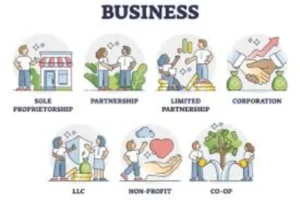Practical Ways to Create Additional Income


If you’re wondering how to boost your income and get your finances on steadier ground, you’re not alone. With inflation, rising living costs, and uncertain pensions, side income is on almost everyone’s mind. Below you’ll find clear, real-world options you can start small with—and scale when they work.
What you’ll learn
- Why it pays to add extra income streams
- Proven methods you can start this month
- How to begin with freelancing, e-commerce, content, and more
- Common questions (startup capital, speed, risk)
- A simple plan to make progress—without gambling your savings
Why look for extra income?
Ask yourself one honest question:
Do your current earnings let you sleep well and still fund your goals?
If not, adding new income sources can help you:
- Build a safety net (emergency fund)
- Pay down debt faster
- Invest your surplus with a plan
- Afford goals you’ve put off (travel, education, hobbies)

Proven ways to earn more
1) Freelancing — work on your terms
If you can write, design, code, edit video, translate, or set up websites, freelancing is a fast, flexible way to monetize skills.
How to start
- Pick a service you can deliver reliably (e.g., blog posts, simple WordPress sites, ad creatives).
- Create a short portfolio (even 3–5 samples is fine).
- List yourself where clients already look (e.g., Upwork) and pitch 5–10 relevant jobs weekly.
Pro tip: Start with small, quick wins. Great first reviews compound into steady work.
2) Passive(-ish) income — get paid after the upfront work
Yes, passive income requires setup. But once it’s live, it can trickle in with less day-to-day effort:
- Rental real estate (direct or via REITs)
- Dividend stocks/ETFs
- Digital products (eBooks, templates, mini-courses)
Passive income = money that needs little ongoing effort after the initial build. It’s not “no work,” but it can become meaningful over time.
3) Real estate — not just for the wealthy
Choose a path that matches your capital and time:
- Short-term rentals (a spare room or studio)
- Flips (buy, renovate, sell)
- House-hacking (live in one unit, rent the others)
- REITs (real estate investment trusts) if you prefer the stock market route and dividend.
4) Online selling — ride the e-commerce wave
Start lean, test quickly:
- Marketplaces: Allegro, OLX, Vinted, or Etsy (handmade/vintage)
- Your own store: Shopify or WooCommerce for control, branding, email list building
- Models to try: print-on-demand, dropshipping, or small curated inventory
Keep shipping simple and your product line tight. The goal is repeatable sales, not a warehouse.
5) Crypto & investing — upside with real risk
Cryptocurrencies can move fast—both up and down. If you explore this lane:
- Learn the basics first (wallets, fees, security)
- Consider staking only on reputable networks you understand; DeFi yields can carry protocol risk
- Never commit money you can’t afford to lose; diversify outside crypto too
Security first: use hardware wallets for larger balances and guard your seed phrase; self-custody mistakes are often irreversible. (For US readers: the IRS treats gig and side-income as taxable; keep clean records.)
6) Content engines — blog, YouTube, or podcast
Turn what you know (or love learning) into content:
- Ads (e.g., AdSense)
- Sponsorships & brand deals
- Affiliate links to products you genuinely use
Success here is about consistency and useful, specific topics. Think “how to fix X on Y model” or “budget travel with a toddler”—not vague life hacks.

Quick-start mini-plans
Freelancing (week 1–2)
- Pick one service → publish 3 portfolio samples → apply to 10 niche-relevant gigs → deliver fast, ask for a testimonial.
Digital product (weekend sprint)
- Outline a template/checklist people ask you for → build v1 in Google Docs/Canva → sell on your site or Gumroad.
E-commerce (14-day test)
- Choose a micro-niche (one audience, one pain) → 3 products → simple landing page → run $5–$10/day test ads → kill what doesn’t convert, double down on what does.
FAQs – Practical Ways to Create Additional Income
Do I need a big upfront budget? No. Many paths (freelancing, content, simple e-commerce) rely more on time and skill than cash.
How fast can I earn?
- Freelancing: sometimes within days if you pitch consistently and price smart
- Passive income: usually months to build, then it compounds
What risks should I watch?
- Scams (especially too-good-to-be-true “remote jobs” via text/WhatsApp—don’t pay to get a job; real employers don’t ask). Report suspicious offers and check the FTC’s guidance.
- Taxes: Side income is taxable; track revenue/expenses from day one (US readers: see IRS gig-economy guidance).
- Overcommitting: start small, cap your downside, and scale what works.
Your 4-step action plan
- Pick one lane that matches your skills and time (freelance, store, content, or product).
- Set a 30-day target (e.g., first $200, 3 client trials, 100 email subscribers).
- Ship something weekly (proposal, product v1, 2 videos, 1 landing page).
- Review & refine every two weeks—cut what stalls, double what gains traction.
Summary
- Choose methods aligned with your skills and interests.
- Never invest money you can’t afford to lose.
- Patience + consistency beat “get-rich-quick.”
- Diversify—one stream pays the bills, the others build freedom.
Start today. Small wins stacked weekly turn into real financial progress sooner than you think.
More hands-on guides and ideas: bitcoin-exchange.uk
Safety & further reading
- IRS: Gig Economy Tax Center (US) — what counts as taxable side income and how to report it.
- IRS: Manage taxes for gig work — thresholds, withholding, estimated taxes.
- FTC: How to avoid work-from-home/job scams — red flags and what to do if targeted
- Upwork Beginner’s Guide — how to set up and find freelance work.
- Passive income basics — what it is (and isn’t).
This article is educational, not financial or legal advice. Rules can change—check current guidance in your country.




